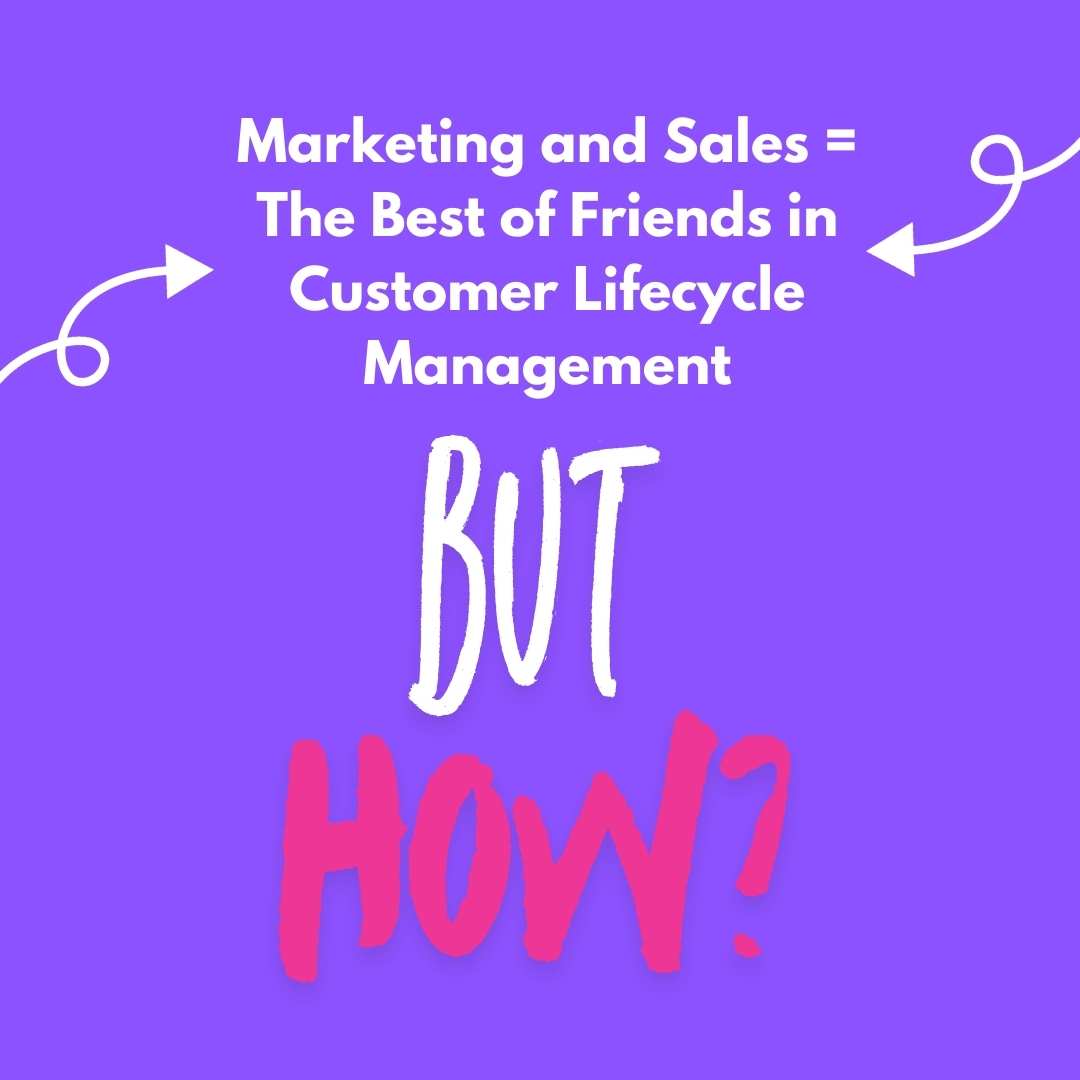
Let’s talk Customer Lifecycle Management, and how marketing needs to be supporting sales during the entire journey.
Customer lifecycle management refers to the strategic approach businesses take to manage the entire journey a customer goes through, from initial awareness of a product or service to post-purchase support and beyond. It’s like guiding someone through a series of stages, each designed to nurture the relationship and maximize their satisfaction and loyalty.
Imagine it as a roadmap that outlines every interaction a customer has with a brand, from the moment they first discover it to their ongoing engagement and advocacy. By understanding and optimizing each stage of this journey, businesses can tailor their marketing, sales, and customer service efforts to meet the specific needs and preferences of their customers, ultimately leading to stronger relationships, higher retention rates, and increased lifetime value. These three teams need to work closely together to create systems and processes that delight and inspire a customer and then work to keep them engaged. (We talk about the Demand Loop here, which ties into Customer Lifecycle Management).
Marketing plays a crucial role in supporting sales throughout the customer lifecycle management journey because it’s all about providing a seamless and satisfying experience for customers at every touchpoint.
Think of it as a tag team effort where marketing sets the stage and sales closes the deal, but both work hand in hand to ensure customers feel valued and supported every step of the way, and inspired and engaged so they not only come back for multiple purchases but also become your “cheerleaders” and put you in conversations you actually aren’t even in.

So how can marketing align with sales, and support the sales motions with marketing motions that maximize inspiration and delight a customer to make them purchase again?
Here’s how marketing can support lifecycle management:
- Awareness Stage: At the awareness stage, marketing efforts focus on capturing the attention of potential customers and introducing them to the brand’s products or services. This involves using various channels such as social media, content marketing, search engine optimization (SEO), and advertising to raise awareness and generate interest among the target audience.
- Consideration Stage: During the consideration stage, marketing aims to educate and inform potential customers about the value proposition of the brand and its offerings. This may involve providing in-depth content such as case studies, product demonstrations, webinars, and comparison guides to help prospects evaluate their options and make informed decisions.
- Decision Stage: At the decision stage, marketing supports customers in making a purchase decision by addressing their concerns, providing reassurance, and offering incentives to convert. This could include limited-time promotions, discounts, free trials, or personalized recommendations based on their preferences and behavior.
- Post-Purchase Stage: After a customer makes a purchase, marketing shifts its focus to nurturing the relationship and enhancing the post-purchase experience. This involves sending thank-you emails, providing order confirmation and tracking information, and offering support resources or tutorials to help customers get the most out of their purchase.
- Retention Stage: Marketing plays a crucial role in fostering customer loyalty and retention by staying engaged with customers over time and offering ongoing value and support. This may involve sending regular newsletters, exclusive offers, loyalty rewards, or personalized recommendations based on their past purchases and preferences.
- Upsell and Cross-Sell Opportunities: Marketing can identify upsell and cross-sell opportunities by analyzing customer data and behavior to suggest additional products or services that complement their initial purchase. This could involve targeted email campaigns, product recommendations on the website, or personalized offers based on their buying history.
- Feedback and Advocacy: Marketing encourages customers to provide feedback and reviews about their experience with the brand, which can be used to improve products or services and inform future marketing strategies. Satisfied customers can also be turned into brand advocates who help spread positive word-of-mouth and attract new customers through referrals and testimonials.

From the initial awareness stage, where marketing generates interest and attracts potential customers, to the post-purchase phase, where sales follows up with personalized assistance and support, each interaction is an opportunity to strengthen the relationship and build trust.
Marketing provides the foundation by crafting compelling messages and creating engaging experiences that resonate with customers, while sales adds the personal touch by addressing individual needs and providing expert guidance. Together, they form a dynamic duo that drives customer satisfaction, loyalty, and ultimately, business growth. If you are a business owner or leader, find ways to ensure that these teams have the time and ability to regularly work together so they can focus on all of these critical areas of Customer Lifecycle Management.
Need help with where marketing can support sales in the CLM? We can help. Contact us today!
